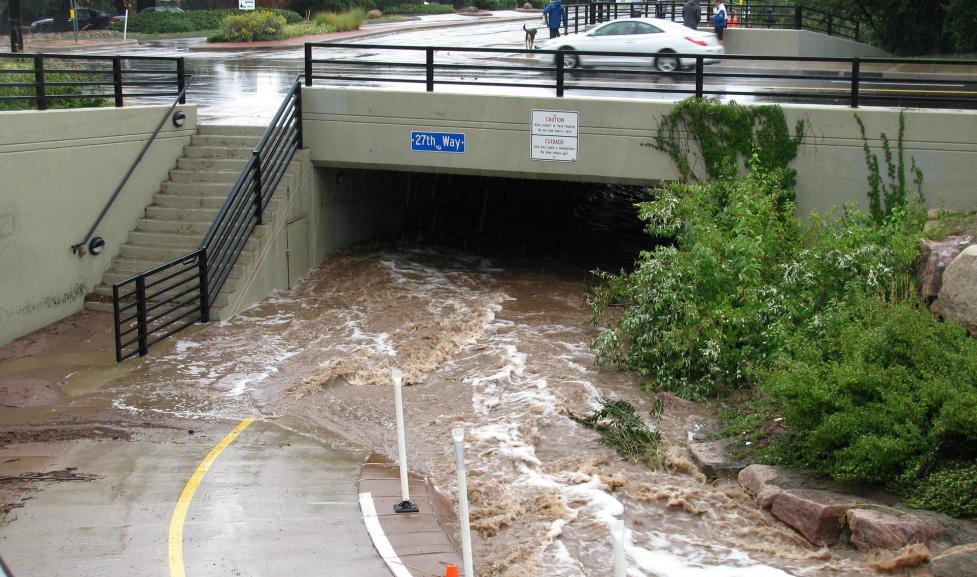The City of Boulder's floodplain regulations are designed to reduce risk to life and property in areas along the 16 major drainageways within the city limits. The regulated floodplain currently covers about 15% of Boulder including over 2,500 individual structures.
The City of Boulder regulates development based upon FEMA Flood Insurance Rate Maps of the 1% Annual Chance Storm (aka the 100-year floodplain). Property owners of buildings with any portion of the structure (including roof overhang, gutters, footings, decks, balconies, etc.) encroaching into the 100-year floodplain are required to obtain a Floodplain Development Permit before expanding a building or constructing any improvements.
Outside of flood zones, please review information about Stream, Wetland and Water Body Permits for more information about construction in those areas.
You can also review Boulder's municipal code regulations for floodplains.
